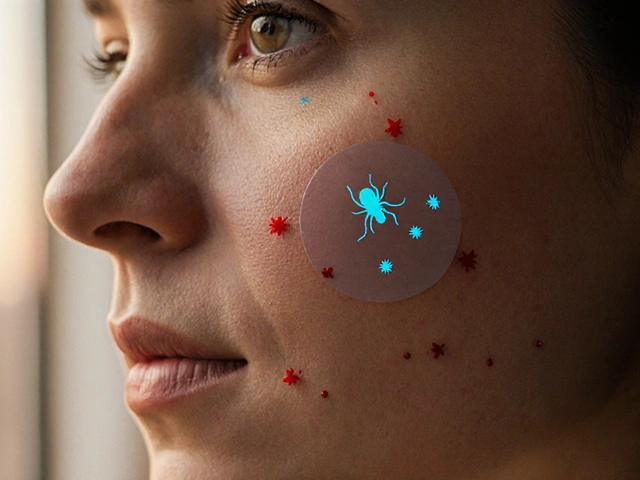Occupational Allergic Disorders: What They Are and Why They Matter
When dealing with occupational allergic disorders, a group of immune‑mediated conditions caused by workplace exposures. Also known as work‑related allergies, they range from skin reactions to breathing problems and can affect anyone from factory workers to office staff.
Key Types and How They Connect
Contact dermatitis, the most common skin manifestation caused by irritants or allergens at work is a classic example. Occupational asthma, a chronic airway disease triggered by inhaled chemicals or dust and allergic rhinitis, nasal inflammation from airborne allergens complete the typical triad. Together, these conditions encompass skin, respiratory, and nasal symptoms, illustrating how a single workplace can provoke multiple allergic pathways. Identifying the specific agent—whether latex, isocyanates, or animal dander—requires careful exposure history and often skin or breath testing.
One important link is occupational sensitization, the process by which repeated exposure turns a harmless substance into an allergen. This sensitization drives the development of both contact dermatitis and occupational asthma, meaning early detection can stop the progression. Employers can reduce sensitization risk by rotating tasks, improving ventilation, and providing personal protective equipment (PPE).
From a clinical perspective, diagnosing these disorders involves a mix of patient interview, physical exam, and targeted tests. Patch testing pinpoints the culprit in contact dermatitis, while spirometry and specific inhalation challenges help confirm occupational asthma. For allergic rhinitis, nasal provocation tests and allergy panels are useful. The goal is to match symptoms to the offending agent, allowing both treatment and workplace adjustments.
Management strategies blend medical therapy with preventive workplace changes. Topical steroids and moisturizers are first‑line for contact dermatitis, whereas inhaled corticosteroids and bronchodilators manage occupational asthma. Antihistamines and nasal corticosteroids calm allergic rhinitis. However, without removing or reducing exposure, symptoms often recur. Implementing engineering controls, like local exhaust ventilation, and administrative controls, such as exposure limits, can dramatically cut relapse rates.
Beyond individual treatment, a coordinated effort between healthcare providers, safety officers, and workers creates a sustainable solution. Regular training on hazard identification, access to safety data sheets, and prompt reporting of symptoms empower employees to act early. Monitoring programs that track incident rates help organizations spot trends and adjust policies before widespread issues emerge.
Below you’ll find a curated collection of articles that dive deeper into specific drugs, safety measures, and real‑world case studies related to occupational allergic disorders. From steroid comparisons for skin inflammation to guidelines on preventing inhalation injuries, these resources give you practical insights you can apply right away.
Managing Workplace Allergies: Prevention and Treatment Guide
Learn how to spot, manage and prevent workplace allergies with practical steps, legal guidance and a clear action plan for employers and employees.
Read





